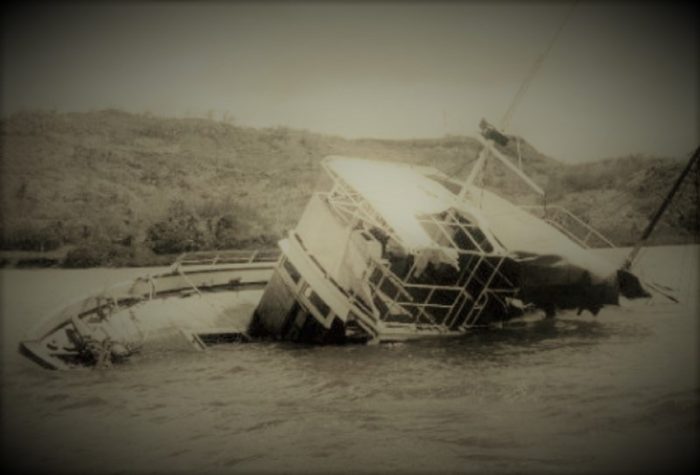
The Bizarre Mystery Of The MV Joyita
- By
- June 20, 2020
- September 28, 2021
- 12 min read
- 2
- Posted in
- Conspiracy Theory Analysis, Unsolved & Unexplained
The discovery of abandoned ships can be found throughout history. And each is as intriguing and mysterious in their own right. Perhaps one of the most interesting and disturbing in equal measure is one that was discovered in the South Pacific in the mid-1950s, with no crew and no cargo.

Port side of the floating wreck of the MV Joyita
Despite an intensive and exhaustive search mission taking place within 24 hours of her expected arrival, no sign of the yacht or anyone on board was found. That is until the captain of another boat spotted the floating wreckage. Upon investigating the empty vessel, further strange discoveries were made.
Just what did happen to the boat that resulted in it being partially submerged and floating aimlessly in the water? Where had all the crew and passengers gone? And, perhaps most bizarre, what had happened to the cargo? Why had no distress calls been received? And why were blood-stained bandages discovered on the crippled vessel?
The many questions would simply pile up the more investigators examined and researched the bizarre event.
Was this the work of pirates who had taken the cargo for themselves and murdered the crew and passengers? Or was the scenario one of a more paranormal or otherworldly affair? Just what happened to the crew and cargo of the MV Joyita?
Contents
A Brief History And The Fateful Voyage
The Joyita had already had two and a half decades of experience on the waves before the fateful incident of October 1955. She began life in 1931 in Los Angeles, built as a private yacht. It was originally made for the movie director, Roland West, who would name the vessel after his wife, Jewel Carmen as the translation of Joyita from Spanish to English is “little jewel”. However, as we shall see, the luxury yacht would have quite a life ahead of her. [1]
At the time, she was one of the finest such yachts on the waters, able to carry cargo up to 70 tons. What’s more, specifically thick cedar oak was used to make the hull, which made it particularly sturdy.
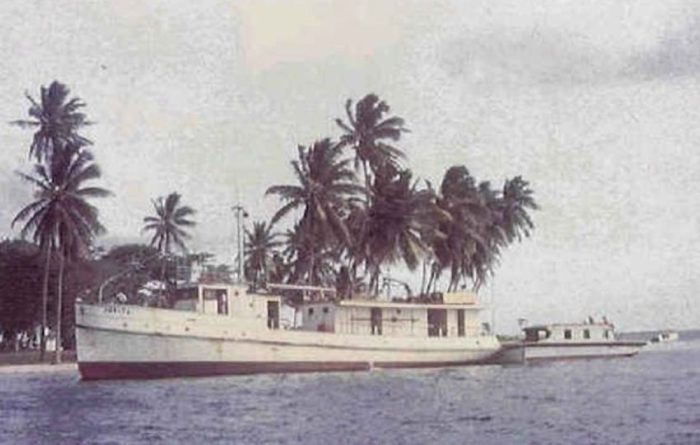
The MV Joyita in happier days
It would appear that she spent most of the first years of her existence sailing between Los Angeles and Mexico. Following a change of ownership in the mid-1930s, she was used by the United States Navy in late-1941 in order to patrol the waters around Pearl Harbor. In fact, she was on active duty with the Navy at the time of the Pearl Harbor attack and would remain so right until the end of the conflict.
Incidentally, and something which would come up later in the yacht’s time on the water, she would run aground in 1943. The incident caused significant damage but due to the need for as many working boats as they could obtain repairs were carried out.
After the end of the Second World War, she was sold once more, and was used mainly as a cargo vessel. She would undergo significant upgrades, including the fitting of refrigerated cargo holds. By the mid-1950s, the Joyita was making regular journeys across the waters of the South Pacific.
A Most Strange Disappearance, October 1955
It was a little after 5 am on the morning of 3rd October 1955 when the Joyita set off from Apia harbor in Samoa. It was destined for the Tokelau Islands, a journey that was expected to take no longer than two days. On board were 25 people, 16 crew, and a further nine passengers. There was also a significant amount of cargo, including medical supplies, various food, and 80 empty oil drums. [2]
It is perhaps interesting to note at this stage that the journey was already delayed almost 24 hours due to a port engine clutch failure just prior to the original departure day at 12 noon the previous day. When the boat did finally leave port, it did so with only one engine.
By the time the Joyita was 24 hours overdue, a report was sent stating that she hadn’t arrived. Records were checked and there had been no distress signals received. For the next week, an intense search mission got underway. This mission lasted almost a week and included the assistance of the New Zealand Royal Air Force.
Despite the exhaustive searching no sign of the ship, the cargo, the crew, or even any wreckage was discovered. It appeared that the boat and all on board had simply vanished into thin air.
Then, just over a month later on 10th November, things changed.
The Sudden Discovery, November 1955
The discovery of the crippled Joyita was made by the captain of a merchant vessel (the Tuvalu), Gerald Douglas. The yacht was over 600 miles from where she should have been and was partially submerged in the water, although still very much afloat.
There was, however, no sign of any of the crew or passengers. Perhaps even stranger, there was also no sign of any of the cargo. Given that we know the Joyita didn’t arrive at her destination, it is impossible that she had off-loaded her cargo on land and then embarked on the return journey. Aside from the fact that the 25 people on board would have surfaced, she was destined to return to Samoa with return cargo.
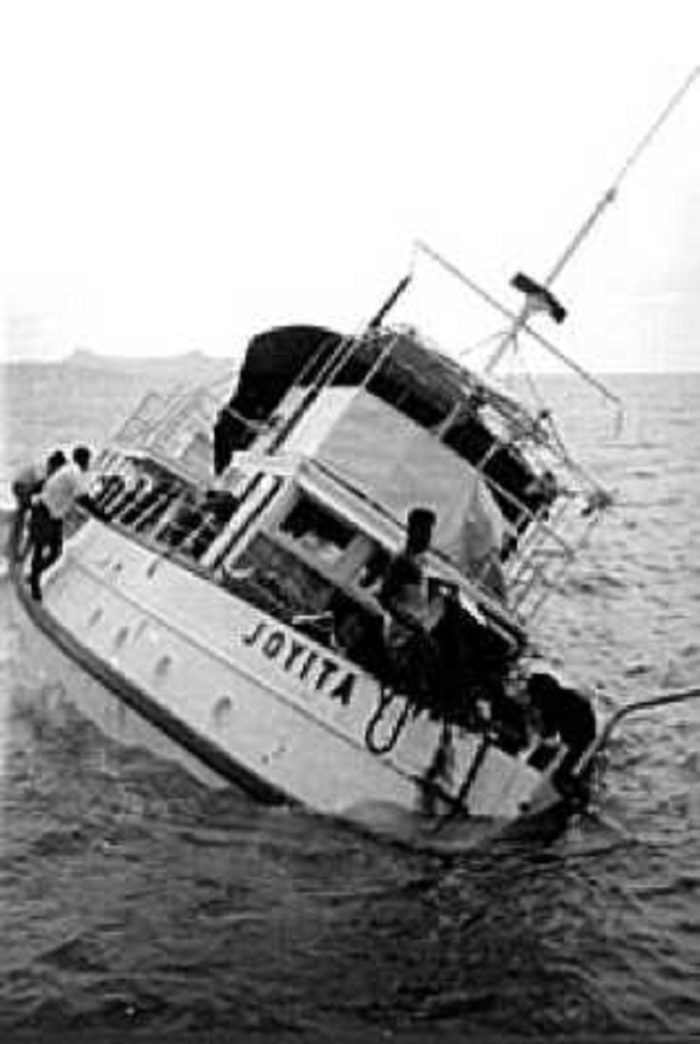
Examining the remains of the MV Joyita
One thing of interest that was noted when investigators arrived at the floating wreckage was that the on-board radio was tuned to the international marine radiotelephone distress wave. Despite there being no distress signal received, it certainly appeared that the crew was at least attempting to signal to someone that all was not well.
As investigators continued to examine the scene, further intriguing details would come to light. For example, the clocks on board (which were electrical and ran from the boat’s power supply) had stopped at 10:25. When this was combined with the fact that the lights in the cabins were mostly left on, it was suggested that whatever did happen on board the Joyita occurred at night, while dark.
Perhaps one of the most alarming finds was the doctor’s bag (one of the passengers was a well-known doctor). Inside was a scalpel and several blood-stained bandages.
Other details continued to paint at least a partial picture of what likely happened.
Several Bizarre And Perplexing Discoveries
Although the Joyita was afloat and not in danger of sinking there was still considerable damage to assess. For example, the superstructure had taken a considerable hit with several smashed windows and further damage to the flying bridge. There was also the discovery of a makeshift shelter made from materials from the wreckage.
In a further bizarre discovery, there were several mattresses that had been set up in the engine room, seemingly in an attempt to cover the equipment. It was also discovered that all three of the life rafts and the single dingy were missing. Had they been deployed with the crew and passengers on board? If so, where did they venture to? Did they arrive somewhere and simply go unreported? Such a scenario is perhaps unlikely. Or did they end their existence in a watery grave somewhere in the waters of the South Pacific?
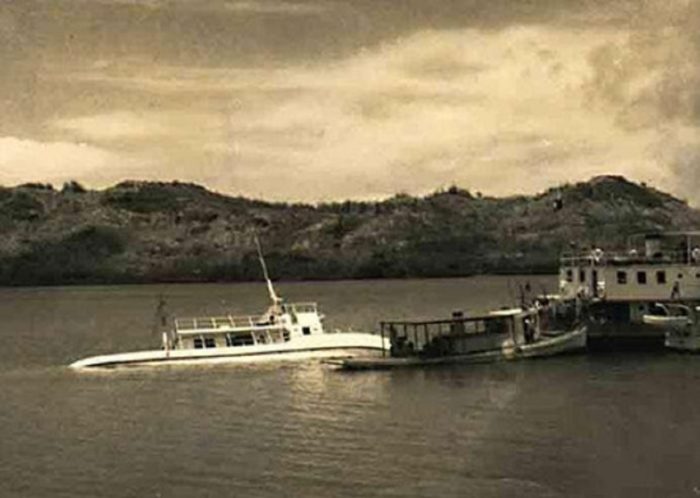
The MV Joyita floating in the water
Investigators also noticed that there was significant barnacle growth on the exposed side of the yacht. This was quite a way higher than the usual water line suggesting to them that the boat had been in such a position for a considerable amount of time, most likely since the second night of the journey when it was suspected that something had gone terribly wrong.
When it was discovered that there was still a considerable amount of fuel in the tanks of the Joyita. Investigators would deduce that there was likely a leak in the engine room (hence the mattresses placed there) and that this likely began at around 9 pm on the second night of the journey, around 90 minutes before the clocks stopped. When they began towing the yacht back to port, they discovered that the leak in the engine’s cooling system.
Why Was The Boat Abandoned?
It was thought by investigators that the leak would have likely caught the crew by surprise. And furthermore, by the time they were aware of it, there would have been so much water in the affected room that it was likely impossible for them to pinpoint where the leak was actually coming from.
Upon arriving back at the port and launching a more extensive investigation, the entire episode took on even more intrigue. Not least as to why the crew and passengers had abandoned the vessel in the first place.
Although it was considerably damaged, the boat would have remained afloat most likely for some time. The upgrades of the refrigerated cargo hold featured significant cork lining around the hold. This, according to investigators, made the boat almost unsinkable. And while the passengers might not have been aware of such a fact, the crew almost certainly would have been, especially the captain.
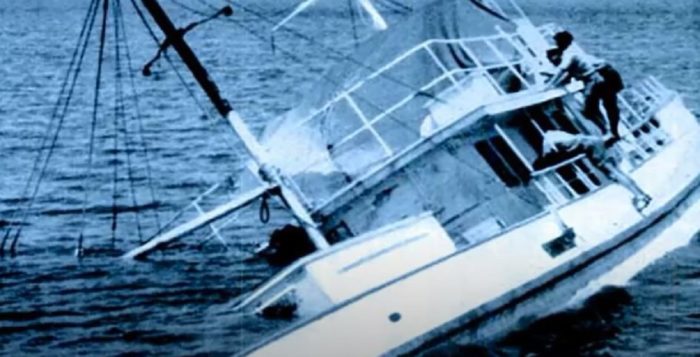
Looking inside the windows of the MV Joyita
Essentially, their best chance of survival was to remain in the boat until help arrived. That they didn’t perplexed and concerned investigators. Something else had to have taken place, they thought. As we shall see shortly, there is a small abundance of theories as to what this something might be.
Ultimately, the responsibility for the incident, at least according to the initial findings of the investigation, would be placed at the feet of Captain Thomas Miller. Not only did they point to the fact that the journey should not have gone ahead with only one engine, but several other acts of negligence were also noted, such as ill-equipped lifeboats and a radio that was faulty.
Incidentally, a fractured cooling pipe in the engine room was identified as the ultimate source of the leak which caused the flooding and partial submerging of the Joyita.
The Many Theories
There are a plethora of theories as to what might have happened on that apparent fateful second night of the two-day journey. And while most of these theories are of the more “level-headed” variety, some are altogether more outrageous.
Were the crew and passengers the victim of a UFO incident or a mass alien abduction? Had the ship happened upon something similar to the Bermuda Triangle and then surfaced again six days later? How would that explain the missing passengers and cargo? Are they somewhere trapped in another dimension or realm of existence? Perhaps one day something might come to light that would endorse such a scenario more fully.
However, while these paranormal explanations are certainly not impossible, it would appear, in this instance, that the explanation is likely more grounded.
Attacked By Japanese Soldiers
There were reports in several newspapers at the time that the Joyita and her crew were the victims of Japanese fishermen who were possibly operating illegally. Once they had been observed by those on the Joyita, they launched an attack and possibly murdered all those on board. Although there was no solid proof of this, one newspaper – the Fiji Times and Herald – would claim to have a solid source who had provided the information.
Another theory involving the Japanese was that of The Daily Telegraph newspaper. It would suggest that the crew and passengers – and the boat itself – had run into Japanese soldiers who still believed the Second World War was being fought. They would even suggest that those on board might still be alive and stored away in a “secret base” on one of the many small islands in the region.
Despite all of the theories, though, there was no evidence to seriously suggest that they were accurate. In retrospect, many point to a remaining prejudice against the Japanese from World War Two – particularly in America and the United Kingdom.
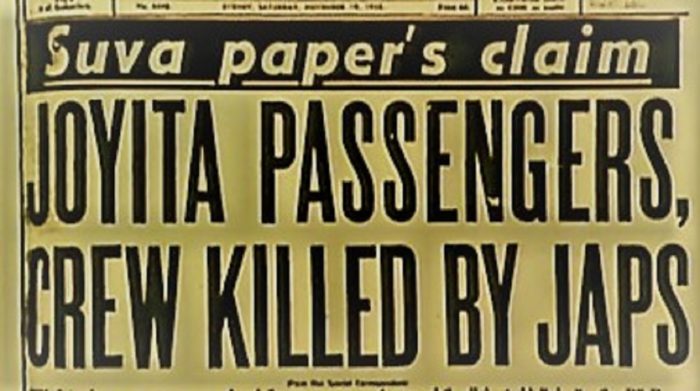
One of the many newspaper headlines of the mystery
It wasn’t just the Japanese who find themselves at the center of suggestions as to what had happened to the unfortunate boat. Some researchers into the affair would point to the Cold War and suggest that the Soviet Union was to blame. They had, according to some theories, kidnapped the passengers and crew and placed them on a submarine.
There were also suggestions of pirates who might have simply happened upon the yacht by chance and mercilessly attacked it for its cargo and any riches they might find on the passengers. Of course, as the passengers and crew were never found, it is not known if they were relieved of their cash and jewelry before meeting their end.
The Importance Of Understanding What Happened To Captain Miller!
There were also slightly less grim if concerning theories. One of which was that the whole affair was part of an insurance fraud. Proponents of such theories would suggest that Miller was in great financial debt and possibly looked to cash in for such a failed mission. It had, however, gone wrong and resulted in the disappearance of everyone involved.
However, upon further inspection, it would appear such suggestions were a little wide of the mark. Not least as Miller stood to make more money from the runs he had booked following the completion of the fateful mission. This was thought to be much more substantial than any insurance payout he might have hoped for.
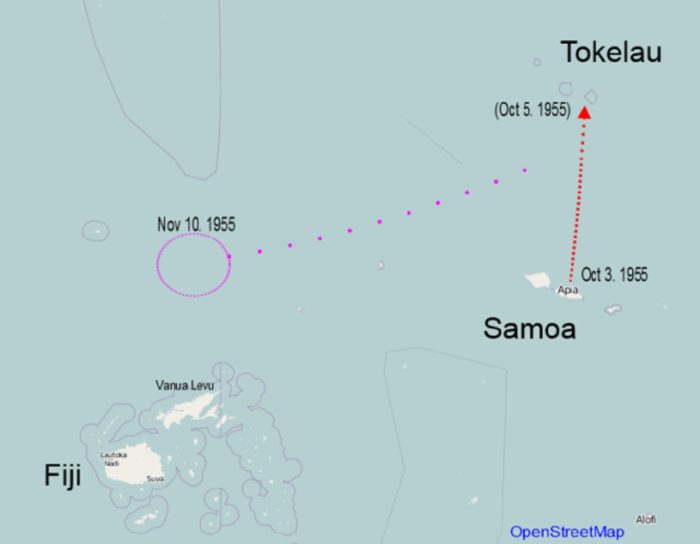
Map of the route of the MV Joyita
Not that Miller was not an interesting character. We already know, for example, that he had set off on that last trip with a substandard vessel and against protocol. There was also the fact that Captain Miller, despite his apparent negligence over whether to sail or not, should have been very much aware of the fact that there was no need to abandon the vessel. This made investigators wonder whether Miller had become injured or had even died. If he was no longer on board when the discovery of the water coming on board, it was possible that the passengers and remaining crew might have panicked and abandoned the boat unnecessarily.
It is perhaps worth remembering at this stage the blood-stained bandages. Had these bandages been used to treat Miller. These notions were seemingly endorsed by a close friend of Millers, who would state that there was no way that he would have abandoned the vessel of his own free will. This leads us neatly on to another suggestion. That mutiny had occurred.
Mutiny Sparked By Negligence?
How well-liked by his crew Miller was or not is perhaps open to debate. There are, however, some suggestions that a mutiny of sorts had taken place at some point before, or after the discovery of the water entering the Joyita.
One researcher who has investigated the incident exhaustively is Robin Maugham who would write about the events in his book, The Joyita Mystery.
The thrust of Maugham’s theory is that upon discovering the boat was taking on water, the mattresses were brought to the engine room, if not in an attempt to stop the water entering to protect the electrical equipment.
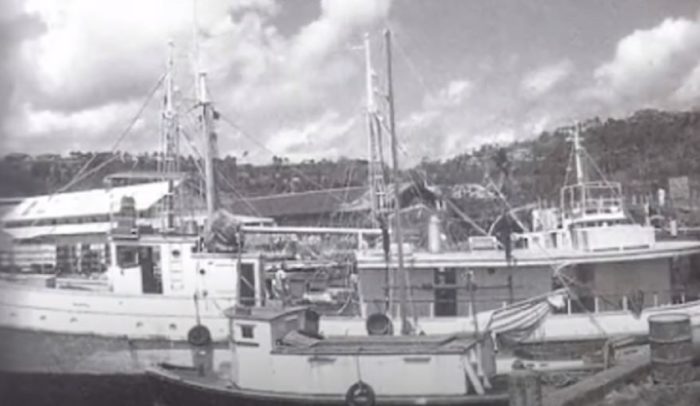
The MV Joyita at the dock
However, it is precisely Miller’s intricate knowledge of the vessel’s ability that likely sparked the speculative mutiny. As he knew that the Joyita was essentially unsinkable and given that we know he was desperately reliant in the money he would earn from this and subsequent journeys, Miller likely ordered that they continue with the mission. Especially as it was theorized initially that the leak began while only around 50 miles from their destination.
This decision was likely met with disagreement from the crew, perhaps even resulting in a physical altercation. This might have been how Miller became injured – if indeed he did. As this was taking place, the vessel was beginning to slow, eventually leading to it being dead in the water. When the engine ceased it would have also caused all the electrics to fail. This, if we remember the stopped clock – happened at 10:25 pm.
It is perhaps worth our time imagining what it must have been like in this scenario. Floating on the water in the sudden darkness, in a confused and panicked state. It is perhaps understandable that those onboard took such drastic if ill-thought-out action.
A Fateful Decision!
Off the back of this potential scenario, a decision was made to abandon the vessel. However, if that was the case, where did they go? And where did they end up? Did their fragile escape boats succumb to the waves and sink?
And what happened to all the cargo? It is surely unlikely that it was taken with them. Perhaps it was simply dumped overboard to help the stricken yacht stay afloat. If that was the case, though, surely some trace of it would be found.
It was ultimately theorized that crew and passengers simply drifted and drifted, possibly to much stronger and deadlier waters. One theory was that they attempted to reach one of the nearby islands but were killed while doing do.
As perhaps likely as this scenario is, it still does not explain why no trace of at least one of the bodies or the escape boats was discovered.
It is perhaps worth mentioning apparent sightings of Captain Miller in Singapore and Honolulu in the years following the incident. However, there appears to be more no solid evidence that the mystery person was the missing captain.
The Later Years Of The MV Joyita
We might be forgiven for believing that the Joyita was, in fact, cursed when we take into account the later years of its life.
The year following the incident in the summer of 1956, a resident from the Fiji Islands would purchase the vessel and begin to upgrade and make her seaworthy once more. However, the same would soon run into heavy legal disputes, mainly over the location of the vessel’s registry, which had been moved from the United States to Great Britain.
Things didn’t improve once the Joyita took to the waters once more. In January 1957, for example, with 13 passengers on board, she would run aground while in the Koro Sea. An extensive repair program got underway, and by the following year, she was again performing merchant missions between the islands of Fiji.
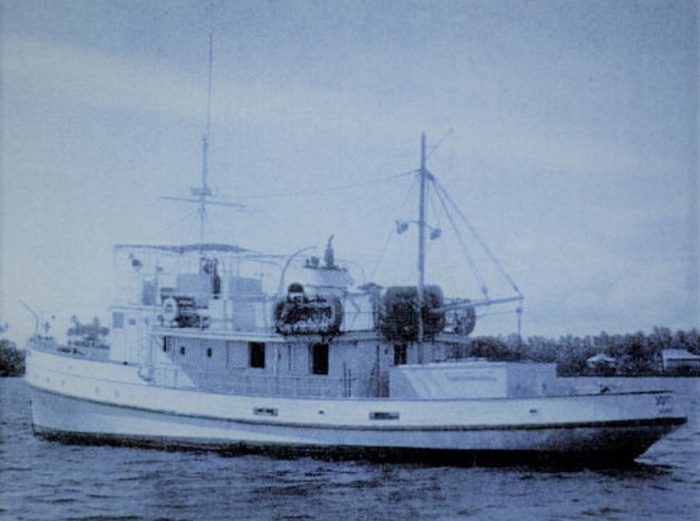
The MV Joyita on the water before the fateful voyage
It appeared these missions were going well until November 1959 when she got into trouble near a reef and ran aground once more. In a stroke of luck, the high tide would dislodge the boat from the reef, but a short time later, she would begin to take water on board. In an even further twist, when the crew attempted to pump out the water from the vessel, it would come to light that they had been installed the wrong way round and so were essentially doing the opposite of what they should have been doing.
The crew would make it to the shore and would basically abandon the damaged boat on the Levuka Beach.
The previously mentioned Robin Maugham would purchase the vessel in the early 1960s as part of his research before selling it on several years later. Despite plans to turn it into a tourist stop-off where people could buy refreshments and visit a small museum, it remained abandoned.
A Mystery That Will Likely Remain A Mystery!
Just what did happen that night in early October 1955? And what did happen to the 25 passengers and crew? Is the explanation simply down to a freak accident compounded by the negligence of Captain Miller? Was a speculative mutiny the result of this negligence?
If this was the case, why was not at least one of the passengers or crew found? Might it be that they and each of the escape vessels found their way to the bottom of the South Pacific? We might suspect that at least one piece of wreckage or one body would have been found.
It is these grey and speculative areas that keep the case officially open as to what might have taken place that evening.
Or might the explanation indeed be one that is line with the paranormal? Might all of those on board have witnessed something otherworldly that not only left them in awe and fright but took them from the boat altogether? It remains a possibility, but even the most open-minded person would have to admit it is a long shot.
Something most certainly happened that evening. And whatever it was, it resulted in the disappearance of 25 people. As well as the complete disappearance of the cargo on board at the time.
That all of those on board died, most likely within days if not hours of the incident, is surely without a doubt. Just what happened in those days or hours, though, will likely remain a mystery for the foreseeable future. And while we have a pretty good idea of the fascinating, if grim events that took place in the South Pacific that fateful night, the small slither if uncertainty keeps researchers intrigued with it.
The video below looks at the Joyita a little further.
References
| ↑1 | Joyita – 1955 “Mary Celeste of the South Pacific”, Andy Hagerty, Night Watch Paranormal https://www.nightwatchparanormal.com/joyita.html |
|---|---|
| ↑2 | MVJoyita – One of the unsolved mysteries of the South Pacific, Nikola Patrovski, Abandoned Spaces, October 10th, 2017 https://www.abandonedspaces.com/wrecks/mvjoyita-one-of-the-unsolved-mysteries-of-the-south-pacific.html?chrome=1 |
Fact Checking/Disclaimer
The stories, accounts, and discussions in this article may go against currently accepted science and common beliefs. The details included in the article are based on the reports, accounts and documentation available as provided by witnesses and publications - sources/references are published above.
We do not aim to prove nor disprove any of the theories, cases, or reports. You should read this article with an open mind and come to a conclusion yourself. Our motto always is, "you make up your own mind". Read more about how we fact-check content here.
Copyright & Republishing Policy
The entire article and the contents within are published by, wholly-owned and copyright of UFO Insight. The author does not own the rights to this content.
You may republish short quotes from this article with a reference back to the original UFO Insight article here as the source. You may not republish the article in its entirety.
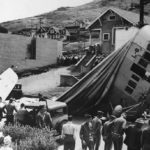
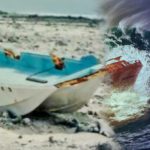

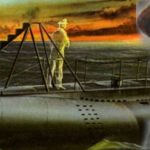
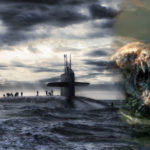
2 Comments
UFO Insight does not take responsibility for the content of the comments below. We take care of filtering profanity as much as we can. The opinions and discussion in the comments below are not the views of UFO Insight, they are the views of the individual posting the comment.
Newest comments appear first, oldest at the bottom. Post a new comment!
I’ve personally never heard of this before, and have not done any further research… but from the little this article says, I feel as though a pirate attack fits a lot of this.
The leak could have been incidental. Or perhaps it caused them to be dead in the water and sitting ducks…?
Cargo stolen, crew perhaps kidnapped and killed elsewhere?
I love a good unexplainable mystery, but seems to me this one has a dozen earthly explanations far more plausible than UFOs or something. :p
In my view the Joyita was UFOED .the passengers and crew may still be alive in another universe or another time?.etc,etc.